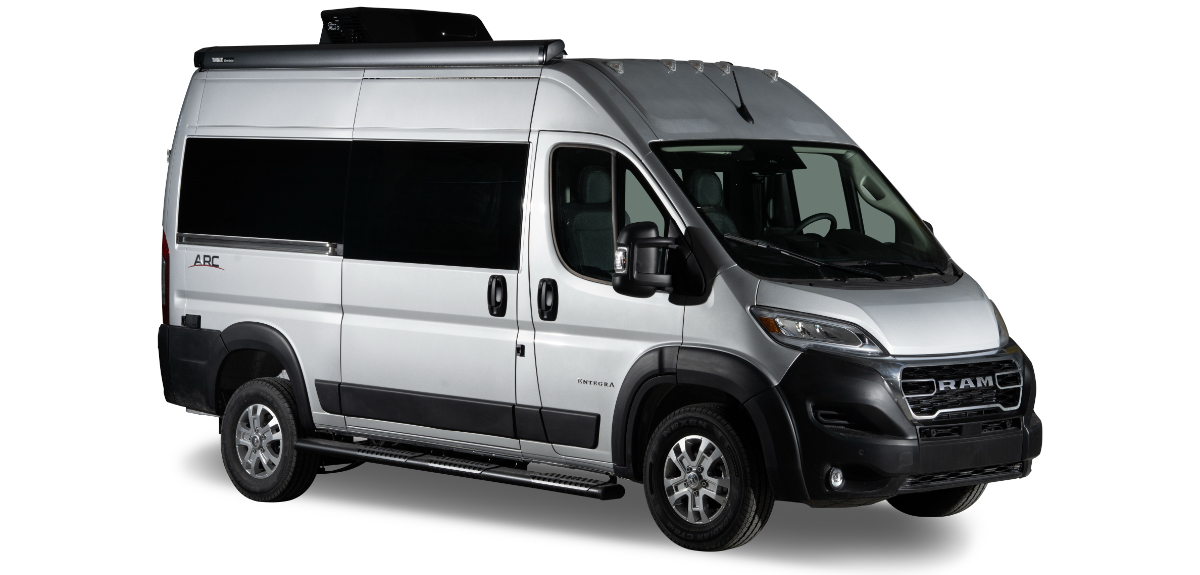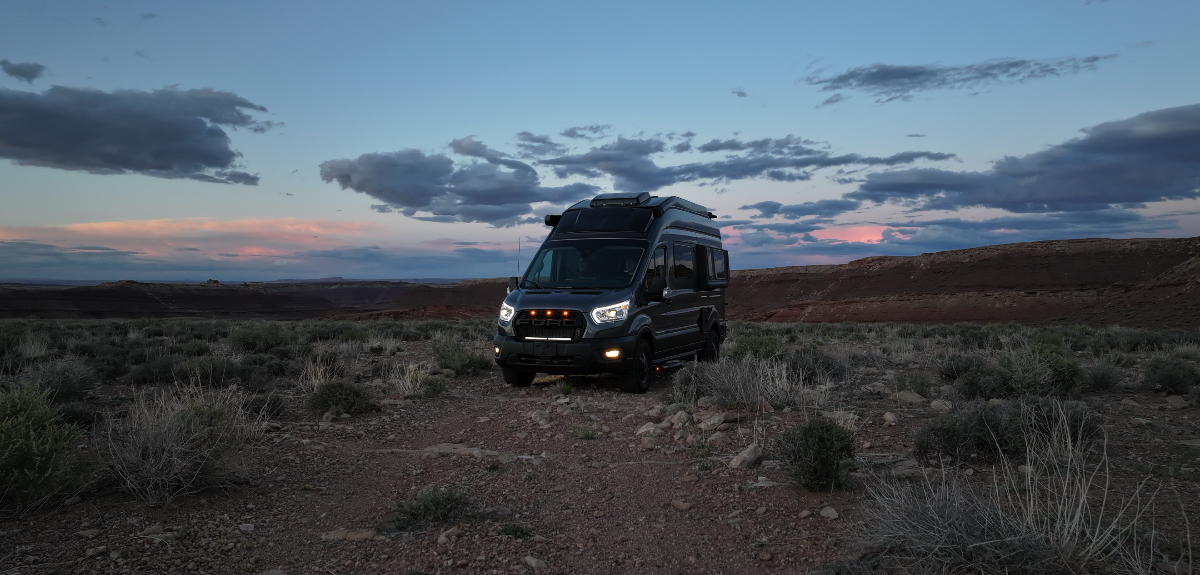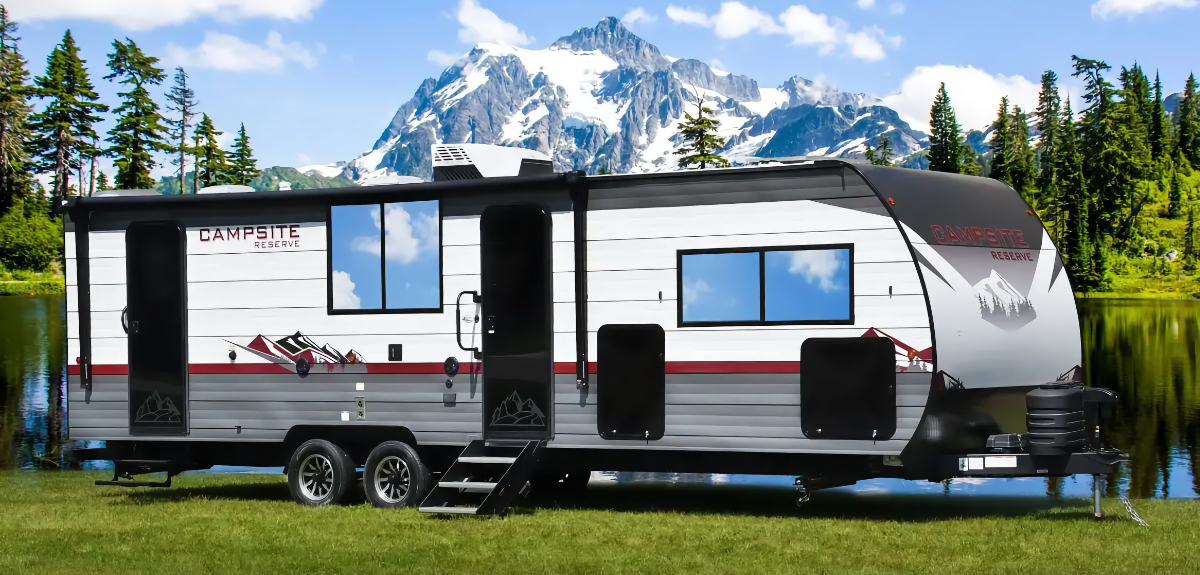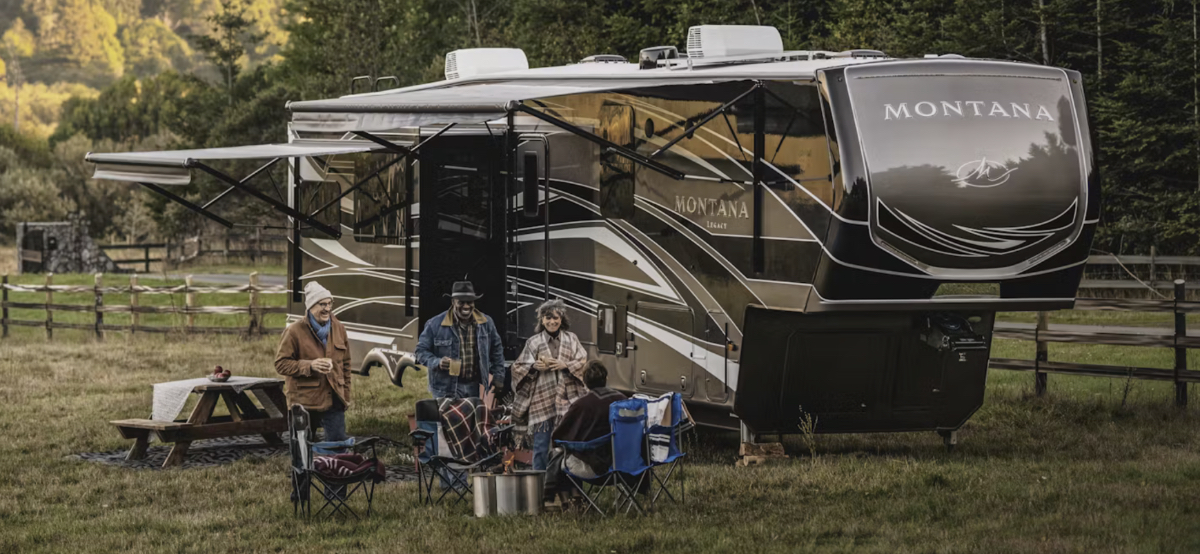Rigs + Gear: Going Deutsch
Live From Germany: A Report From the World's Biggest RV Show
Image Caption: Photo Credit: James Adinaro
If you were asked what the biggest RV show is, you might think it’s “America’s Largest RV Show” in Hershey, Pennsylvania. That show is certainly big, with around 60,000 attendees roaming more than a million square feet of exhibit space. But it’s not as big as the Tampa show: The Florida RV SuperShow attracts over 70,000 attendees to 2 million square feet of exhibit space.
And both of those are dwarfed by Caravan Salon, held each year in Düsseldorf, Germany—the largest RV show in the world. This year, the gala in Germany’s industrial heartland hosted 254,000 attendees on 2.7 million feet of indoor show space. I’m not sure what it says about my wife and I that we traveled all the way to Europe to go to an RV show … but we did—and it wasn’t the first time we’ve been. This latest installment did not disappoint.
It’s Not Just for Europeans
We were far from the only North Americans at the show. The yearly pilgrimage to Germany is inked on the calendars of many RV executives. We bumped into representatives from many companies you’d recognize, from RV manufacturers like Winnebago to component suppliers like Lippert and Thetford.
Their reasons for attending vary. RV manufacturers might send their product development staff to gather new ideas to incorporate into future models. Or, they might be there scouting suppliers of cabinetry, accessories, table legs, and even just plywood. (Caravan Salon is just as much a trade show as it is a consumer show.)
Component suppliers like Dometic and Truma also have European operations, so it’s only natural that their European employees would be there, but we ran into many of their US and Canadian-based staff during our visit as well. We were glad to see them because it gave us the chance to ask questions like, “When can we get this cool thing back in the States?”
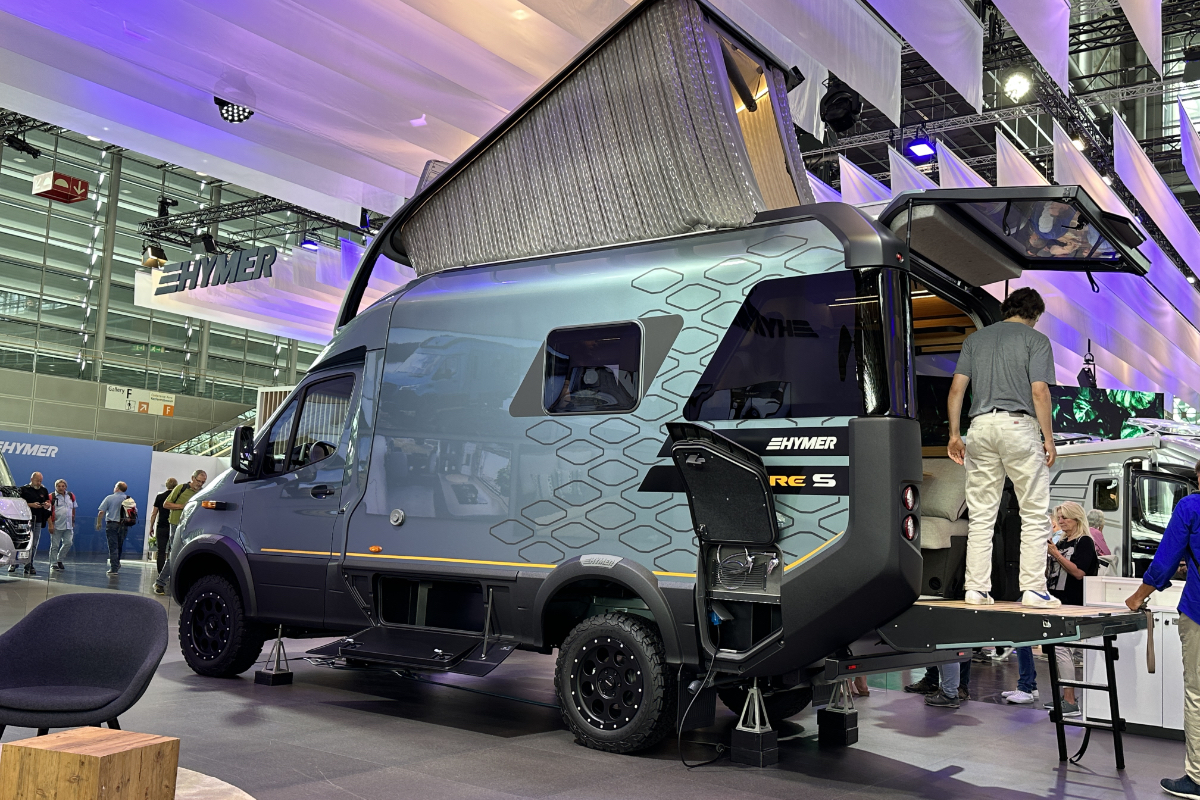
Photo Credit: James Adinaro
European RVs are Different
Many of you already know this, but European RVs have several key differences from those here in North America. First and foremost, European RV designers are very concerned with weight. I know we try to keep things lightweight here, but in Europe, they take it to the next level.
Much of the weight obsession is driven by legal requirements around driver’s licenses and who can drive what type of vehicle, of up to what length, and up to what weight. (The requirements can be confusing, with some allowances even made based on the year you were born.) Manufacturers there are keen to make their products available to the widest possible audience, so they make them as light and as small as possible.
The focus on weight shows up in several ways. First, there’s a focus on lighter-weight materials in general. We stopped by several booths of suppliers who made extremely lightweight plywood, cabinets, and wall panels. (Imagine plywood filled with foam instead of wood!) These materials are very important to the whole European RV industry. Though we’re a bit more relaxed with driver’s licenses here, I wouldn’t be surprised to find more and more of these materials making their way into stateside RVs in the future.
Another way European RVs differ lies in what they don’t have on board. For example, most European RVs do not include air conditioners, microwave ovens, generators, large refrigerators, or large battery banks. Some of this is undoubtedly cultural—microwave ovens just aren’t as big a deal in Europe as they are here. And it’s been our experience that European air conditioning doesn’t work anyway, so leaving out a lackluster air conditioner doesn’t seem like that big of a loss. (Our European friends, by the way, think we’re all crazy because we keep our buildings igloo-cold.)
But much of what’s left out of European RVs can be traced back to weight. It’s not that European drivers wouldn’t enjoy a large lithium battery bank or a generator; designers just can’t spare the weight to include it. Some of the ultra-luxury RVs we saw actually did have these features, which told me that they were desirable items. It’s just that not everyone in Europe can afford to hire a professionally licensed big-rig driver to drive their RV around.
Impressive and Innovative Design Ideas
Whether these RVs had generators and large refrigerators or not, some of the designs we saw were very novel. We saw a lot of innovations based on the idea of going up instead of going out; for example, several triple-bunk floor plans. Sure, that’s neat. But when you consider that they were able to pull off three-high bunk beds in a camper van, then it becomes even more impressive.
We saw the idea of making more use of vertical space explored in a few ways. There were regular canvas pop-tops, as you might see here. But then there were inflatable pop tops in several different styles. There were also several examples of what I’ll call a “safari top”, where the whole roof of the RV raises up with canvas side walls.
Interestingly, we also saw a number of vans with raised roofs, similar to older high-top conversion vans. Here in North America, the fiberglass high-top van has been largely replaced by the taller Euro-style vans. But at Caravan Salon, we saw several fiberglass hightop conversions … on top of Euro-style vans for even more height. What goes around comes around, I suppose!
One thing we saw at Caravan Salon that we don’t see here is the idea of building on a double-floor. Many RVs on display had an 8- to 10-inch space between the underside of the RV and the floor you walk on. This utility space is used for holding tanks, heaters, ductwork, wiring chases, and other purposes. Besides creating an insulated space to make the RVs more winter-worthy, this also has the benefit of making retrofits, wiring, and plumbing service easier—as it minimizes snaking around cabinets and behind walls. It’s an idea that I’d love to see over here.
And finally, no discussion of European RVs would be complete if we didn’t touch on the styling. There’s just no avoiding it—these RVs looked…Refined? Swanky? Tasteful? I’m not sure how to describe it, but the aesthetic sensibility is different compared to what you see in North American vehicles. It’s not an unusual thing to walk into an RV at Caravan Salon and instantly know, “well this RV is Italian,” based on nothing more than styling cues. However you’d describe it, the European design sensibility is very much on display at the show.
If you should happen to find yourself in Europe towards the end of August, it’s certainly worth your time to head to Caravan Salon in Düsseldorf. Even if you can’t drive your next RV off the lot there, the inspiration you’ll get from this massive and unique show is worth more than the price of admission.
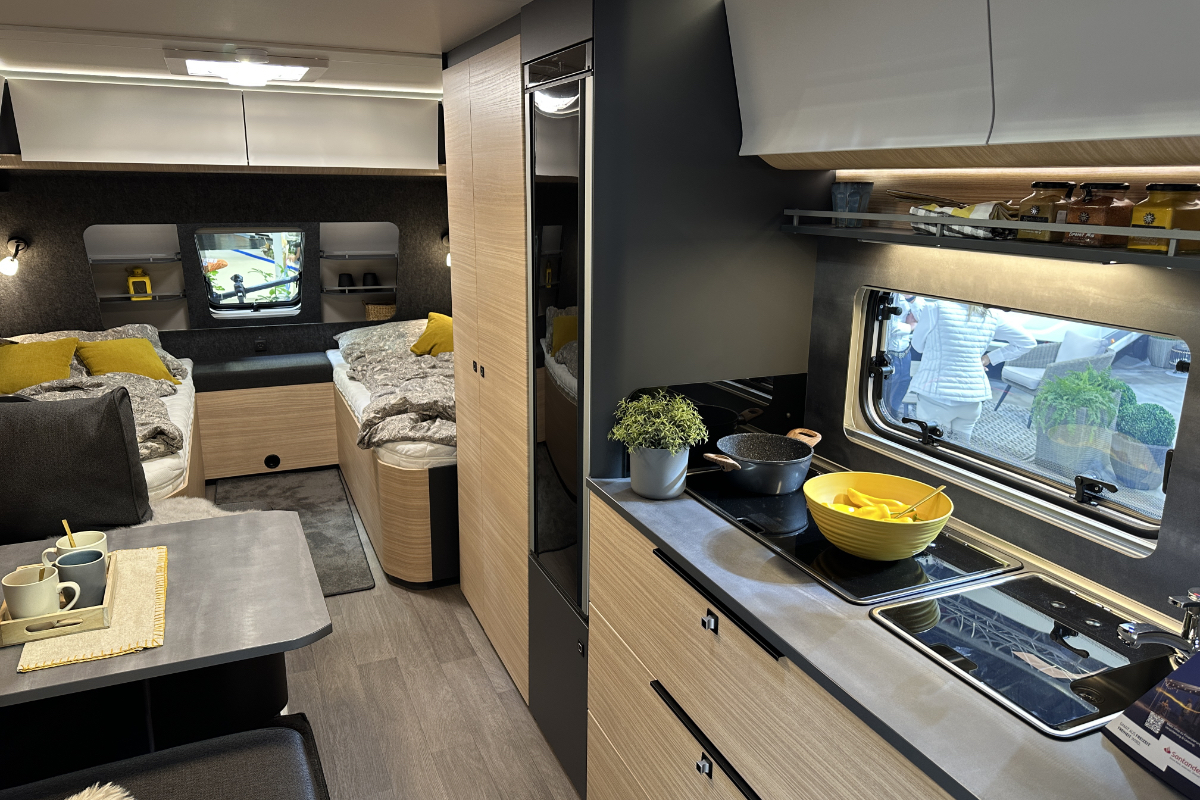
Photo Credit: James Adinaro
Accessories and Gift Ideas
It’s not just motorhomes and travel trailers at Caravan Salon. The RV accessories and add-on manufacturers are there as well, and we spent a lot of time checking out the distinctive and innovative products.
High-security locks from HEOSolution
I’m only slightly exaggerating when I say that the North American RV industry uses basically six different keys, some notoriously easy to defeat. Don’t actually try this, but if you see your same model of RV at a campground, there’s a good chance your key will work. (Again, don’t actually do this.) This is why aftermarket locks are a popular mod for RVers.
HEOSolution makes aftermarket locks for a variety of storage compartments or entry-door configurations. If you have a motorhome that’s based on a Ram ProMaster, Ford Transit, or a Mercedes Sprinter, they also have locks to supplement the vehicle cab locks. They offer 100,000 different key codes, which makes it highly unlikely that anyone else will be able to open your doors. Their solid and secure locks can be made to fit doors from 20mm to 90mm (1 to 3.5 inches) thick.
Cinderella Incinerating Toilet: Diesel Edition
This year, Cinderella showcased a diesel-powered toilet to Caravan Salon. By using a diesel vehicle’s onboard tank, the energy supply for the toilet would be replenished at each fill-up.
Upscale Camping Dinnerware from Flamefield
We have melamine dinnerware – plates, bowls, and such – in our own RV. They work great, and we haven’t been able to break them yet. But they look a little… utilitarian. At Caravan Salon, we found upscale dinnerware designs from Flamefield that were made from the same durable melamine we use now—but much nicer looking.
The dinnerware had other RV-friendly features, too—like non-slip rings on the bottom that keep your dishes in place no matter at what angle your RV is parked. And beyond just the dinnerware, they also offered polycarbonate glassware that has the look and feel of glass – without the potential for breaking.
Winia (Daewoo) Mini Washing Machine
I’ve been tracking this mini washer (and the washer/dryer) for years. I’d desperately like to have one. It’s small, at just a couple of cubic feet. It could be mounted on the wall in the smallest of RVs. And it can do up to 6 pounds of laundry in a load.
Unfortunately, it’s only available in 250-volt configurations. So it’s available in Europe. It’s available in Asia. It’s available in Australia. But it’s not available here. I could figure out how to power it, but first, I’ve got to find one.
Twusch Porcelain Bowl Liners for Cassette Toilets
Upgrading from a plastic to a china toilet is a common RV upgrade. Unfortunately, it’s been one that’s unavailable to those with cassette toilets. There are no cassette toilets (that I’m aware of) with porcelain bowls. And after a while, plastic toilet bowls just become… unpleasant.
Enter the Twusch bowl liners. Made in the exact profile of popular models of Thetford cassette toilets, these porcelain liners essentially convert the bowl part of a cassette toilet to a china bowl. The Thetford representative we talked to in Düsseldorf said they were planning to bring this to North America soon. Since our current RV has a cassette toilet, I can hardly wait.
Electric Bike Lift from BR-Systems
I prefer higher-mounted racks for bike transport. They’re out of the way of road debris and potential accidents. Plus, a rack that’s higher up makes it more challenging for a thief to defeat the locks. But if you have a heavy e-bike, lifting your bike onto a chest-high rack can be a real struggle. You can do it, but you won’t enjoy it.
BR-Systems has developed a motorized bike lift that provides both a high transport position to keep the bike out of harm’s way and an easy roll-on, roll-off platform for loading and unloading. The electric lift mechanism is quiet and effective (even if it isn’t super fast). We saw several bike racks at Caravan Salon, but this one was our favorite.

